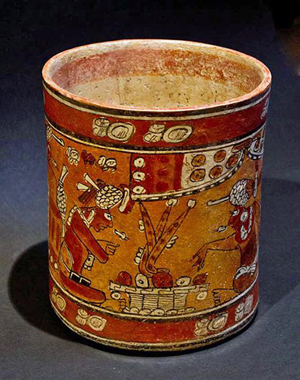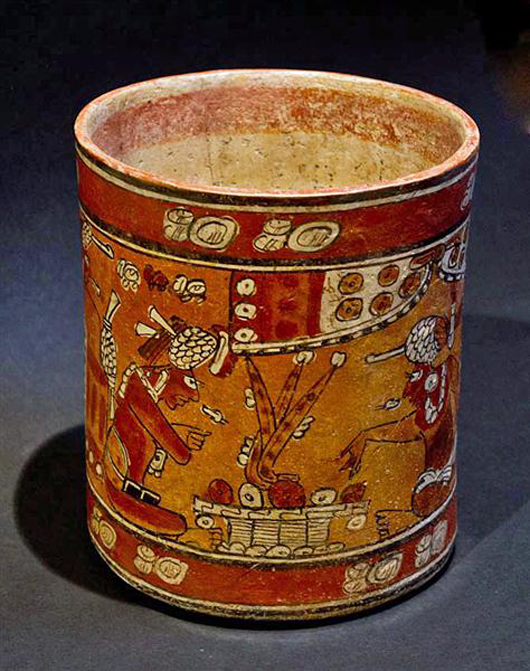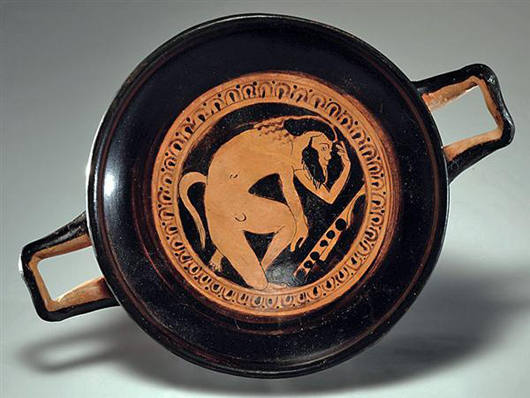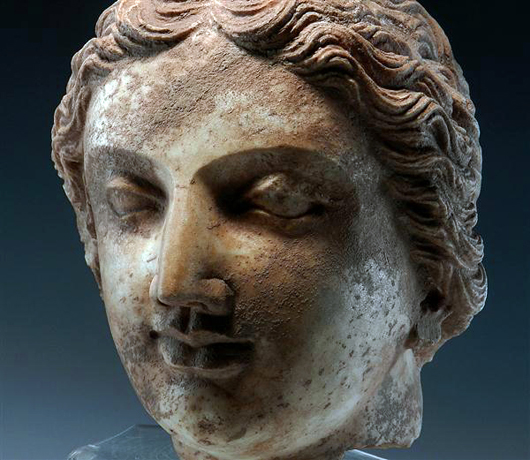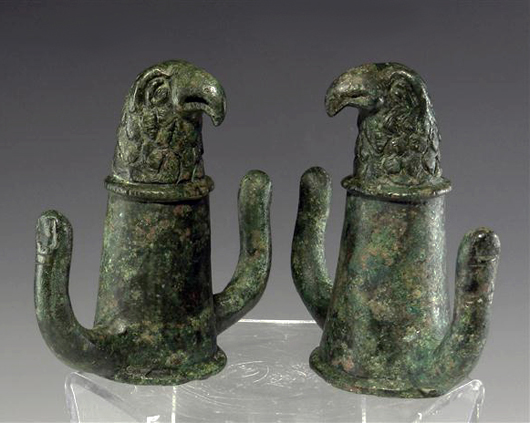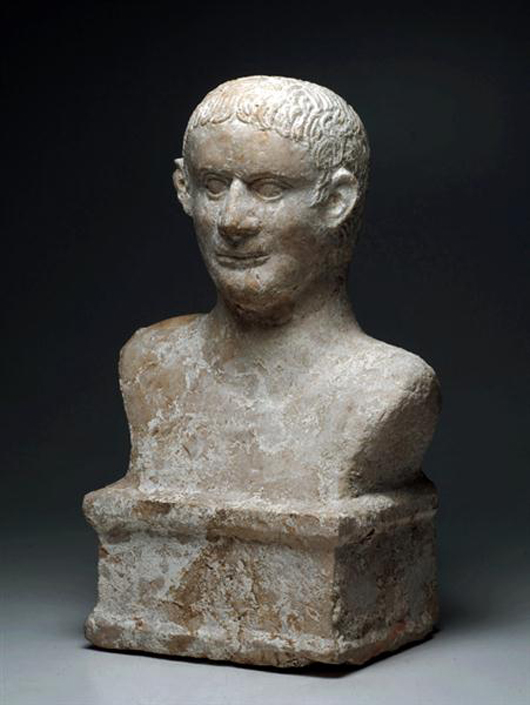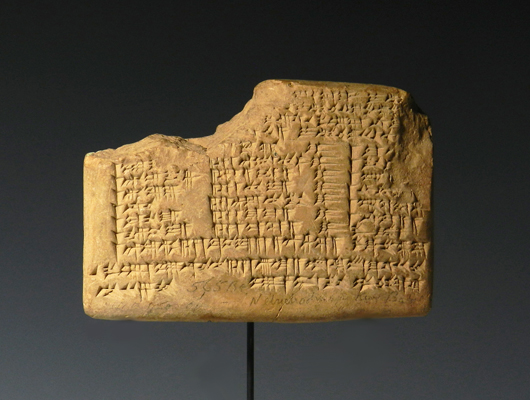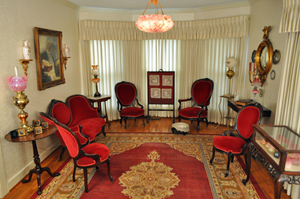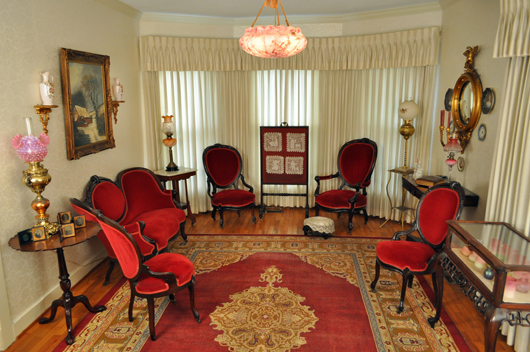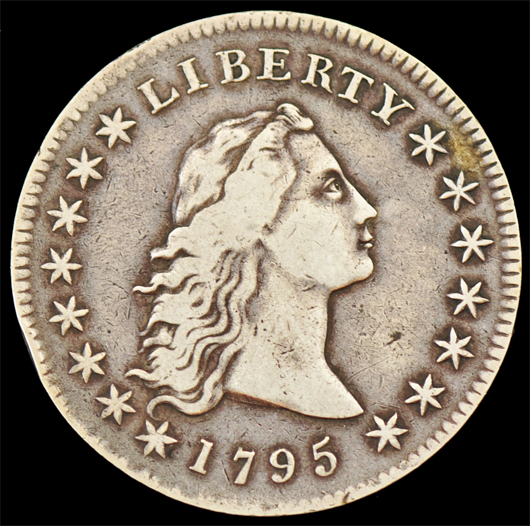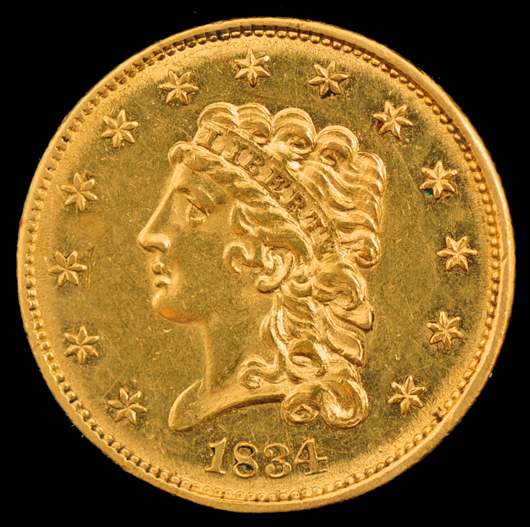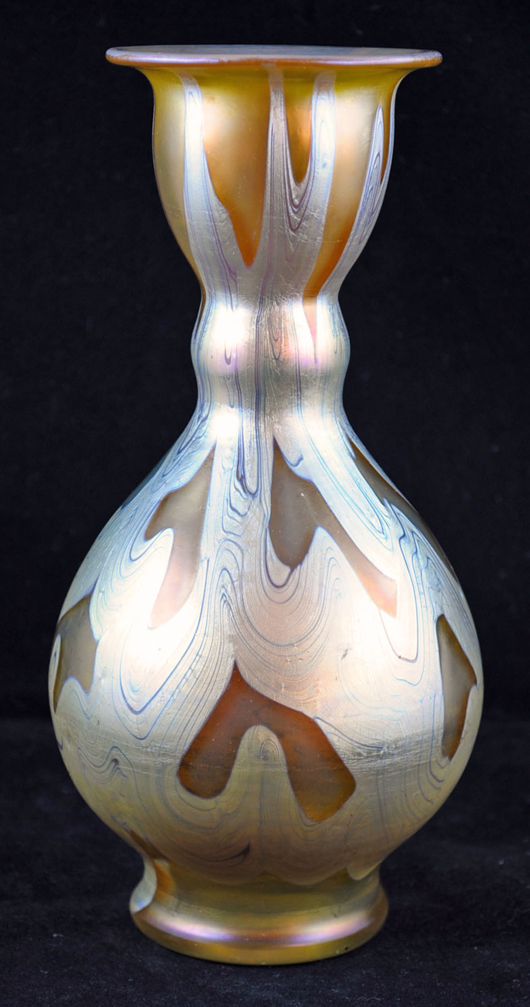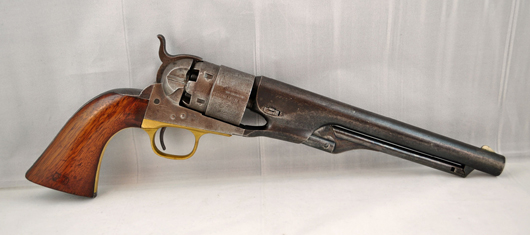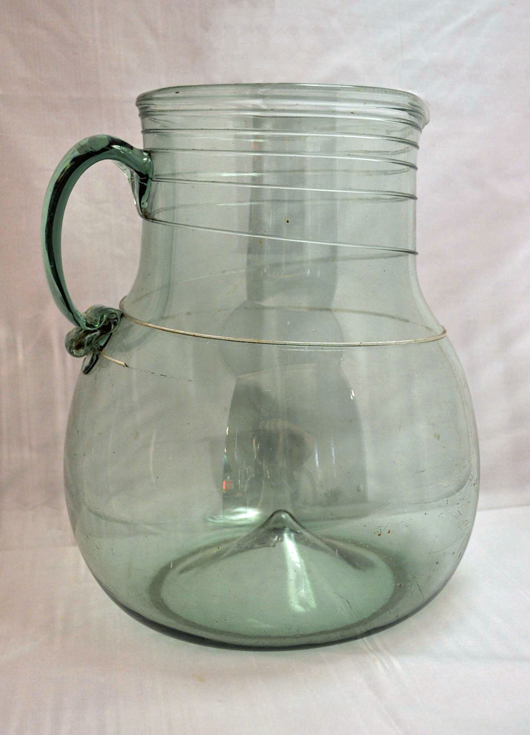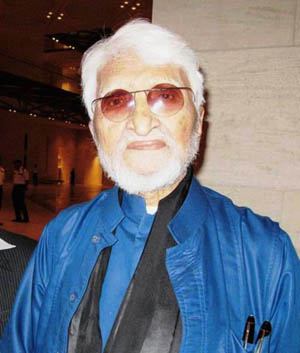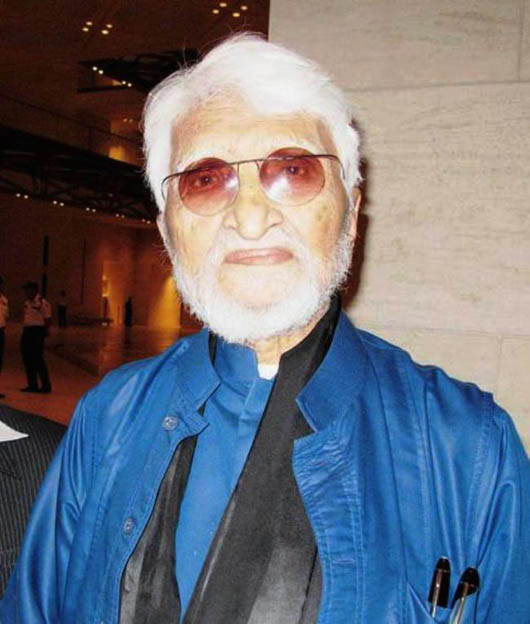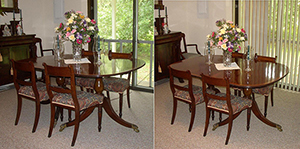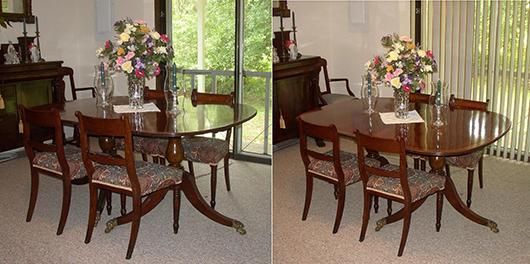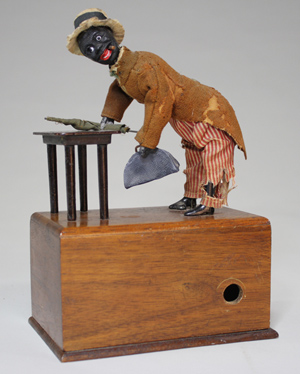
Ives clockwork Stump Speaker, all original, est. $5,000-$7,000. RSL Auction image. TIMONIUM, Md. – Anyone who has bought or sold black Americana or finer-quality black-theme toys is likely to know Allen Liffman, a trailblazing dealer in African-American antiques. Over the past 30 years, Liffman has also been an active and enthusiastic collector of rare black Americana, and on Saturday, Dec. 1, RSL Auction Company will have the honor of auctioning his lifetime collection. The 630-lot sale, with Internet live bidding through LiveAuctioneers.com, will also be highlighted by the mechanical bank collections of two esteemed former members of the MBCA – the late Waldo Hutchins III and the late William H. Labelle Sr.
“We had sold a few of Allen Liffman’s black toys in our July 1st auction,” said RSL partner Ray Haradin. “They did so well that Allen decided to consign his entire collection to our December sale. We’re really happy to be handling it. It’s a great collection.”
Clockwork toys from the Liffman consignment include an exceptional Ives Stump Speaker, which Haradin described as “an appropriate toy for a Presidential election year.” Dressed in red and white striped pants and a jacket with tails, the figure is complete with accessory leather bag, umbrella, straw hat and cigar.
Another outstanding Ives toy is the woman Suffragette. Like the Stump Speaker, the Suffragette is in all-original condition. Both toys carry individual estimates of $5,000-$7,000.
Making it an Ives trifecta, an always-popular circa-1885 Sparring Pugilists toy depicts two African-American boxers who punch at each other when the clockwork mechanism is activated. It is expected to make $6,000-$9,000 at auction.
Many desirable Gunthermann clockwork toys with black subjects will be offered. A circa-1910 banjo player sitting on a stool is estimated at $1,400-$1,800, while a ball juggler with a “watermelon” body could realize $1,000-$1,500.
A clockwork toy that Haradin said he has never seen before is a depiction of a black tumbler dressed in a suit and straw hat. The rare Gunthermann production carries a presale estimate of $3,500-$5,500.
The catalog cover lot is a scarce, German-made black-face Jiggs (as in “Jiggs and Maggie”) automaton. Made of papier-mache, cloth and wood, the circa-1910 toy stands 23 inches high and is estimated at $3,500-$5,500.
A whole host of popular comic characters is found in the Liffman collection, including Spic & Span and many other “jigger” toys; Amos & Andy, and Snowflake on Spark Plug. There are also many “generic” types of black toys, e.g. mammies; plus folk art and black ephemera. More than 100 minstrel and other black-theme posters and paintings will be auctioned, with a price range that runs from $300-$3,000.
“There isn’t a type of black memorabilia that Allen Liffman overlooked in his decades of collecting,” said Haradin. “There’s a huge variety, with an emphasis on figural pieces.”
Among the other black-related items Liffman amassed are lawn sprinklers, trade signs, Aunt Jemima advertising and premiums; ceramics, pinball and other games; canes, ventriloquist’s dummies, and humidors, including a rare card player seated on clay pipes, which would hold crossover appeal with collectors of tobacciana and gambling items.
Bank collectors are expected to show keen interest in the sale’s two featured bank collections.
“Both the late Waldo Hutchins III and the late William H. Labelle Sr. were members of the Mechanical Bank Collectors of America, and both had very nice collections. They were veterans of the hobby,” Haradin said. “Bill Labelle did most of his collecting in the 1960s and ’70s, while Waldo Hutchins built his collection mostly in the 1970s and ’80s.”
Cast-iron mechanical banks in the sale are led by a beautiful J. & E. Stevens Girl Skipping Rope, est. $18,000-$25,000; and a blue-dress version of the Kyser & Rex production known as Mammy and Child, with provenance from the Rick Goldstein collection, est. $20,000-$30,000. An exquisite J. & E. Stevens Darktown Battery bank, with its popular depiction of African-American baseball players, is entered with a presale estimate of $7,000-$9,000.
More than 230 still banks will be available at the auction, including some very desirable spelter and cast-iron forms. An appealing polychrome-painted cast iron Football Player, replicating a helmeted player in primitive-style uniform with football held overhead, would be a prize in any collection. It’s expected to score $2,000-$3,000 on auction day. There will be many coveted architectural banks offered in the sale, as well, including a Building with Belfry, est. $2,500-$3,500. The spelter selection includes an unusual bank in the form of a cigar-smoking black boy standing on a ball, and several rare non-bank treasures – among them, a figural black “dandy” watch holder.
A prestigious circa-1890 American toy, the 22-inch-long Ives Cutter Sleigh depicts a handsome “walking” horse whose action cleverly simulates pulling a sleigh. The example in RSL’s Dec. 1 auction is one of only four such toys known to exist. It is expected to command $30,000-$50,000.
Many other excellent toys will be up for bid, including a pristine circa-1906 Hubley Santa Sleigh, est. $3,000-$5,000; horse-drawn American tin, cast-iron and European automotive toys, and a few bell toys.
RSL’s Saturday, Dec. 1 auction will begin at 10 a.m. Eastern Time. For additional information on any item in sale, call Ray Haradin at 412-343-8733, Leon Weiss at 917-991-7352, or Steven Weiss at 212-729-0011. E-mail raytoys@aol.com or geminitoys@earthlink.net.
View the fully illustrated catalog and sign up to bid absentee or live via the Internet at www.LiveAuctioneers.com.
# # #
ADDITIONAL LOTS OF NOTE
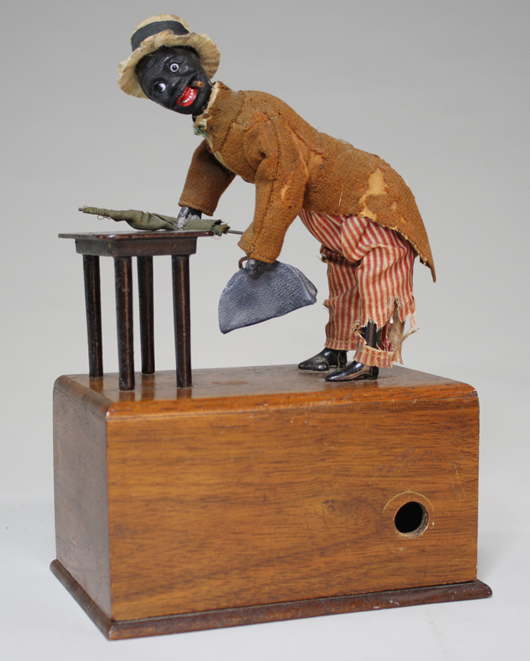
Ives clockwork Stump Speaker, all original, est. $5,000-$7,000. RSL Auction image.


